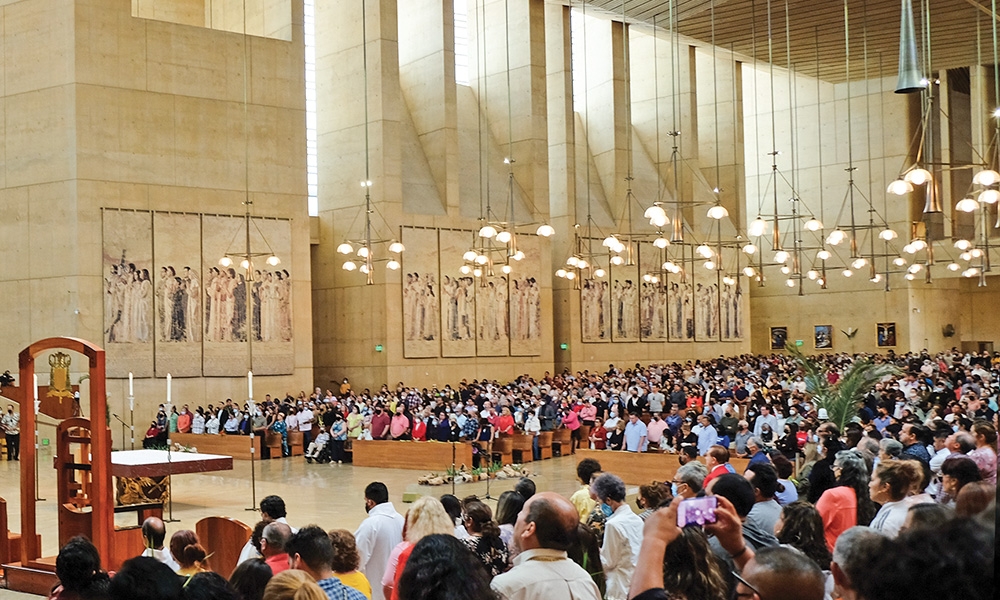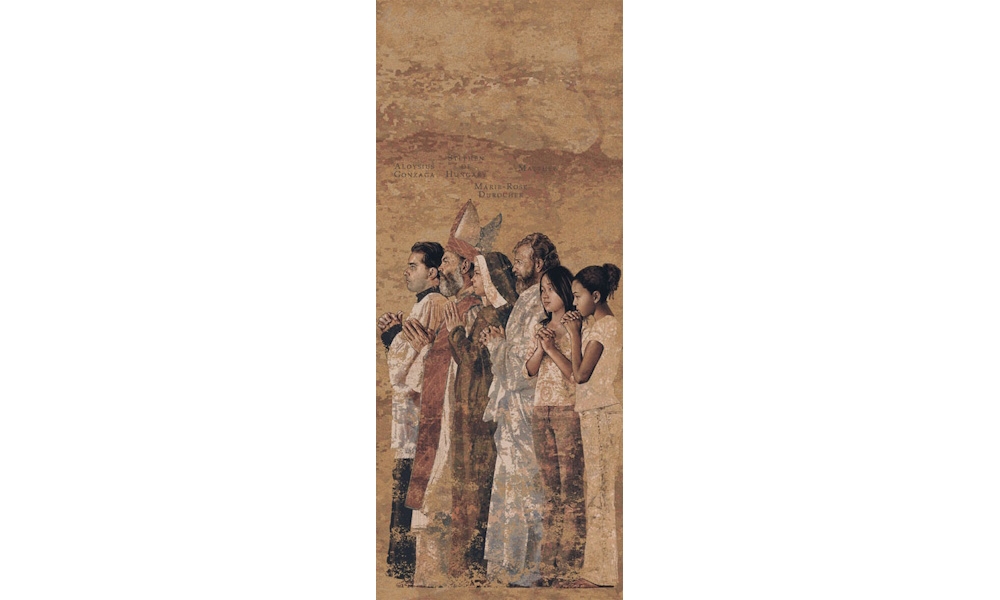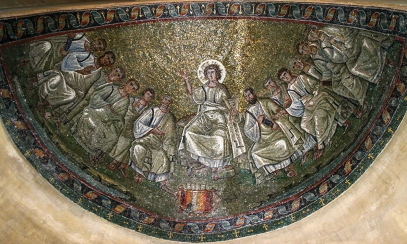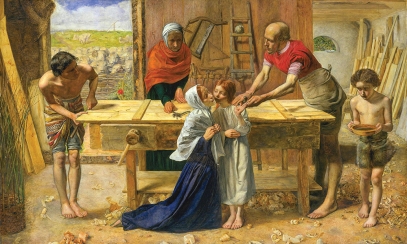
Connecting with the Communion of Saints
When it was completed in 2002, the Cathedral of Our Lady of the Angels in Los Angeles was an 11-story high modern interpretation of the long tradition of European cathedrals. While many artists were commissioned to create original art for the cathedral, including a massive bronze entryway by Robert Graham, what stands out for me are the beautiful tapestries depicting the Communion of Saints created by John Nava.
When it was completed in 2002, the Cathedral of Our Lady of the Angels in Los Angeles was an 11-story high modern interpretation of the long tradition of European cathedrals. While many artists were commissioned to create original art for the cathedral, including a massive bronze entryway by Robert Graham, what stands out for me are the beautiful tapestries depicting the Communion of Saints created by John Nava.
“Within the overtly modernist architectural setting of the new cathedral the Communion of Saints tapestries meant to make an immediate and, I hope, warm human connection. The naturalistic rendering of very ordinary looking faces, whether first century, medieval or modern, underlined this humanity,” Nava said.
There are 25 groupings of 135 saints and blessed (beatified) from around the world and over the centuries, all drawn in a realistic style. Because the cathedral faces east, the tapestries are on the north and south walls, with the figures effectively processing toward the altar along with worshippers. While the saints are each named, there are 12 people who are not identified.
“The inclusion of anonymous figures in the frieze meant to convey that it was not absolutely necessary to be a miracle worker or a martyr to gain heaven,” Nava said.
The cathedral walls are an adobe-colored architectural concrete, and Nava’s tapestries, averaging around 18 inches high, blend in well, and soften the look of the concrete as well as aid the acoustics. While using tapestries in churches has been common for centuries, in a stroke of genius, Nava made them look like deteriorating frescoes in those ancient churches, carefully locating the crumbling look at the bottom of the panels and the clothing, while keeping the faces intact.
The visual textures of the backgrounds were created using digital images of stones, rock, rusted metal and even images from excavations from Jerusalem’s Via Dolorosa. For some of the more recent saints, photographs allowed Nava to portray them closely, while for many he used portraits, paintings and even a death mask. For some, he used relatives, local children and people found by a casting director as models, occasionally even having costumes made.
“Graphically, the fresco-like textures and colors of the tapestries aimed to fictively bind them to the walls of the church, to make them feel embedded in the structure rather than surface decorations. At the same time, these textures referred to the long heritage of images on the walls of Roman churches,” Nava said.
Without modern technology, even with Nava’s considerable artistic skills, it would have taken decades to weave these tapestries. He would have had to create full-size painted “cartoons” for the weavers to follow (remember the scale), and then the weavers would have had to acquire the materials, match colors and then produce the weavings. Nava worked with another California artist, Donald Farnsworth, to conceive a method to create digital files of his paintings, combining them with the library of visual textures and patterns that had been created to compose the panels.
A Belgium firm, Flanders Tapestries, had the computerized looms capable of reading the files. By combining 16 colors in the two directions (warp and weft) of the weavings, they created a range of 240 colors. Even so, there was much testing with actual woven samples to obtain the true colors, and all the while Nava was still working on his drawings. In a stunningly short timeline, it took only 20 months for Nava to design the tapestries and two months for the tapestries to be woven!
Pope Francis writes in Fratelli Tutti, “No one can experience the true beauty of life without relating to others, without having real faces to love. This is part of the mystery of authentic existence.” Nava’s figures are of different genders, ages, races and nationalities, showing that all belong to this Communion of Saints. The term “saints” refers to all the people of God, not just those canonized by the church. This interrelationship is a profound message of hope, and Nava wants worshippers “to see the humanity of these figures and feel a sense of connection to themselves.”
For a more thorough look at the tapestries
visit www.olacathedral.org, click on Art and Architecture then scroll to tapestries. To see all the art of the cathedral, click on Church and scroll to artists.
Mark Landers is a parishioner of St. Austin Parish in Austin and a member of the Diocesan Fine Arts Council. He and his wife, Christina, own and operate Landers’ Studio, a woodworking shop and design studio. They design and construct custom furniture and high-quality architectural piecework.




